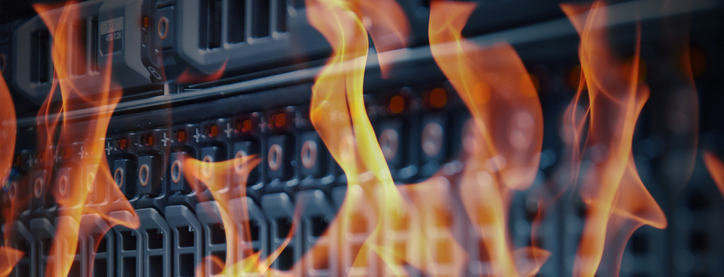Businesses and organizations both large and small rely on their data systems to function. In the event that these systems are compromised it can be incredibly costly to conduct data recovery, and those companies who decide to put off setting up a disaster recovery plan can end up paying a huge price. According to San Diego-based AMA Networks owner Amir Hadziosmanovic data loss due to malware, ransomware, and scams are currently the biggest threats to the IT security of companies.
“The biggest global threat to business cyber security today is malware or ransomware. Company data is their nucleus, and a malware/ransomware attack has the potential to take out even the most stable business in the world in matter of minutes–think Home Depot, Aetna, Target, etc,” says Hadziosmanovic.
Attacks Are Alarmingly Common
Although current data suggests that malware and ransomware attacks are increasingly and troublingly common, many of them are not even reported—suggesting the actual number of attacks is much larger. “According to the IT community, MSP forums and general IT discussion, ransomware and malware attacks on business are more frequent and they will continue to be,” says Hadziosmanovic. “So many incidents that we do not know about are not reported because the payout amount was below $500. Average ransomware request is between $500-$2,000 and 20% of them are over $5,000.”
And if you don’t pay the ransomware or your data is non-recoverable by normal means due to a fire or flood it can get incredibly costly. “There was a study completed by Datto in 2016 that suggested downtime from malware and ransomware can cost a small business as much as $10,000. Some say it is $1,000 per hour if you hire some of the big recovery firms to help you. According to the FBI Internet Complaint Center there were nearly 2,500 complaints registered in 2015 resulting in about $1.6B in damages,” says Hadziosmanovic.
It’s important to weigh the cost of putting proper disaster recovery in place vs how much it would cost to lose everything.
You’re Never Too Small To Be A Target
Never think that you won’t be a target, whether it’s the size of your business or your industry. “The old school mentality “I am too small” for the hackers is no longer acceptable,” says Hadziosmanovic. “You are a business, you make money, therefore you are fair game. If hackers can hit up 10,000 small business and every one of them paid $1,000 ransom, that would equate to a very nice paycheck for the hacker of $10,000,000.” And it’s true; hackers often spread their nets very wide in an attempt to target hundreds of thousands of businesses at once in an effort to get a few to bite.
What Is The Best Method For Disaster Recovery?
So how can a company take steps to prevent data loss, theft, and extortion? Planning ahead is the biggest step. Implementing a plan of action in case your business suffers a catastrophic loss is essential to preventing the loss of money, time, and customer trust.
Establishing a disaster recovery and backup plan is tempting to put off because it’s not technically necessary for a business to have in order to operate. You can hum along just fine without one. However, this can leave you high and dry in the event of an emergency. You don’t want to join the throngs of people Googling “hard disk recovery”, “ransomware recovery”, or similar. Setting up a plan of action is also cheaper than recovery.
Additionally, ensuring that security best practices are followed by your team can also help prevent “zero day” threats, or new threats that use phishing and scam tactics to gain access via human error.
Hire The Pros
Hiring a professional IT company to custom-tailor a BDR (Backup Disaster Recovery) solution fit to your needs and budget is the most cost-effective way to ensure that your business will be protected from both cyber threats as well as natural disasters such as earthquakes, fires, and floods.
Test, Test, Test
According to Hadziosmanovic, it’s important to ensure that these backup disaster plans are tested multiple times throughout the year to ensure that they are working properly. At AMA Networks in San Diego, when BDR plans are set up for companies they are tested for redundancy multiple times throughout the year, and often they can have a company back up in a few hours or even minutes.
San Diego Data Recovery And Planning For Businesses And Organizations
If you are a Southern California or San Diego based business and you’re interested in hiring a professional IT company to handle your backup disaster recovery planning, AMA Networks is a great choice. “AMA Networks has helped companies implement this solution across multiple vertices; construction companies, healthcare providers, government subcontractors, professional services, government agencies, and more,” says Hadziosmanovic. “AMA Networks will test your BDR and BC solution 2-4 times a year and ensure proper testing and failover for both BDR and BC solutions.” Contact AMA Networks today to get a free assessment!

